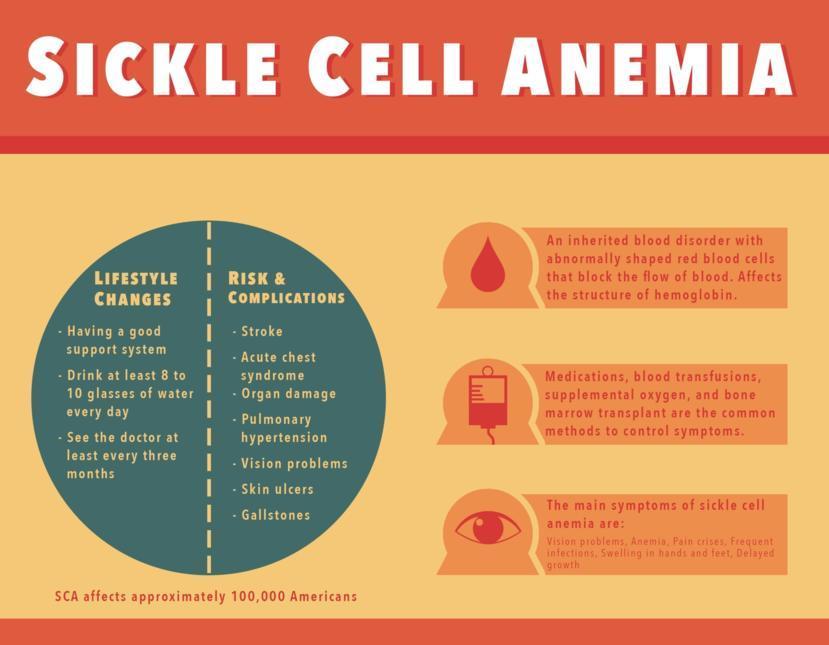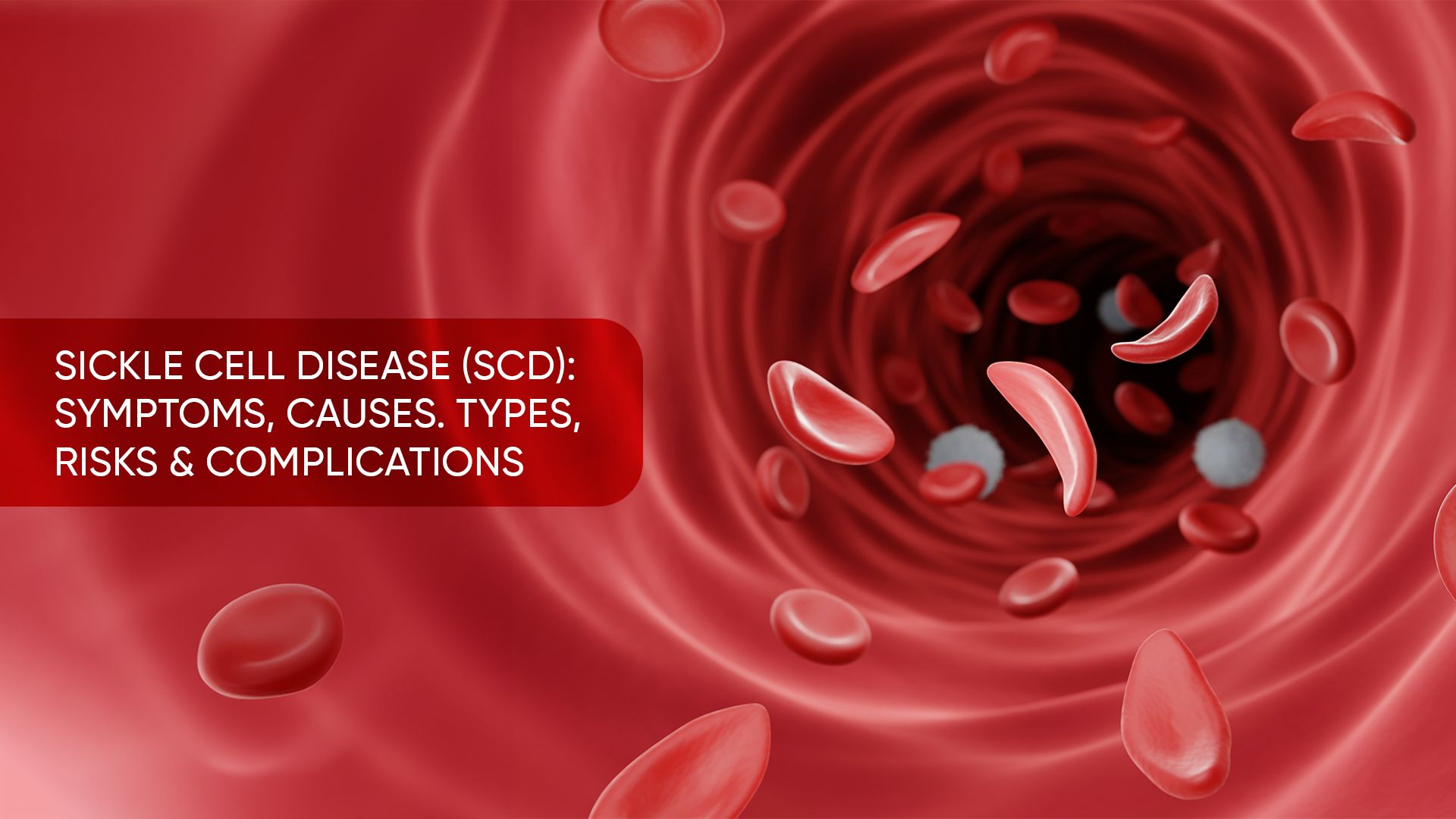Sickle Cell Disease (SCD) is a genetic blood disorder that affects a significant number of people around the world. It modifies the structure of the red blood cells that are responsible for transporting oxygen to every part of the body and this results in a series of difficulties. Although the disease is of grave concern, it is worth noting that the disease can be well managed by the knowledge of its signs, causes, and diagnosis. And hey, let’s not make this all doom and gloom- I mean even when dealing with issues as tough as SCD, some humor is rather not fulsome.
What is Sickle Cell Disease?
More than enough shape and functionality is offered to red blood cells. In Sickle Cell Disease similar cells have loss instead change in shape to sickle or ‘C’ form. These abnormal cells are then trapped in tiny blood vessels causing a reduction or even cessation of blood supply or oxygen to a given region in the body. If your body is compared to a city, sickle shaped cells are some annoying cars that are blocking the intersection for too long during the time of heavy traffic.
In Sickle Cell Disease normal straight red blood cells last for about 120 days, sickled cells last for 10 to 20 days and hence this leads to deficiency disease, where the body has red blood cells. In their current allocation of forty eight hours, let’s be honest with ourselves, these red blood cells temper tantrum pose a danger to be more than that.
Symptoms of Sickle Cell Disease
Sickle Cell Disease is a typical illness owing to the occurrence of a number of signs in its patients, with some being rather less severe than any one of them. It is always beneficial to know them for the reason to undergo treatment sooner, thereby preventing any further trouble. Here’s a short list.
- Chronic Anemia: Owing to the fragility and early hemolysis of sickled cells most patients afflicted with this SCD tend to share one thing in common which is the presence of anemia that usually makes on feel tired and healthy status=sum_pos_wpwhgihxflwb18dqoiit3hoayd9v8dwh.
- Pain Crises: An essential feature of SCD is the repeated occurrence of pain, also termed as pain crises or sickle cell crises. The pain is characterized by blood clotting and can be either mild or acute, in most cases requiring admission.
- Swelling in Hands and Feet: Three alternatives for dactylitis are dactylosyndactyly, finkelsteining, and teddy bears, trodden here as owies and bad wee toutenkopers.
- Frequent Infections: The spleen is one of those organs which serves two useful functions during fighting infection and the action is directed at the blood. In most cases, this organ becomes severely impaired in SCD, resulting in more frequent occurring.
- Delayed Growth: In SCD children, that do not constitute an anemia cause, we may observe a reduced growth rate and delayed adolescence.
- Vision Problems: Obstruction in such delicate eye limbs to abnormalities like impaired vision occurs when severe complications outlined in the core of this section were present.
Table 1: Common Symptoms of Sickle Cell Disease
| Symptom | Description | Severity |
|---|---|---|
| Chronic Anemia | Lack of healthy red blood cells | Moderate to Severe |
| Pain Crises | Sudden, intense episodes of pain | Severe |
| Swelling (Dactylitis) | Swelling in hands and feet | Mild to Moderate |
| Frequent Infections | Higher susceptibility to infections | Moderate to Severe |
| Delayed Growth | Slower physical development in children | Mild to Moderate |
| Vision Problems | Blocked blood vessels in the eyes | Mild to Severe |
Now, there it is safe to say that sickle cell disease comes with many problems, but let’s have some fun for a minute: “Having sickle cell disease is like having your body keep the traffic on red all day long. No way you can rush anywhere and most of the time, it’s a bit like standing on the queue at one of those Dante’s circles, the DMV.”
Causes of Sickle Cell Disease
Sickle Cell disease is the disease that is inherited from the parents to their children. It is because that person has to get two copies of the sickle cell gene, one coming from each parent. If only one sickle cell gene is inherited, the person is said to have “sickle sell trait”, that means they can sport this gene on but are usually not opt for any of the symptoms.
Imagine you got your father’s breadth of humor but got your mother’s temperament. If you get both, it can be quite a roller coaster. But this time the roller coaster is sickle cell disease where one doesnt want this custom in their family tree.
- For a child to acquire SCD: Both parents must either carry sickle cell trait or suffer from the disease.
- In every four births the child will inherit two sickle-cell genes which is one from each parent therefore suffers from sickle cell anaemia.
- Two sickle cell genes, one on each parental side, will bepassed down to the child with a 50% chance whereby sickle cell trait will be present.
- In 25% of such cases, the child will receive genes from both parents as these are normal thereby predisposing the child from sickle cell anaemia.
Table 2: Inheritance Pattern of Sickle Cell Disease
| Parent Genotypes | Child Outcomes | Likelihood |
|---|---|---|
| One parent with trait, one normal | 50% chance of sickle cell trait | Moderate |
| Both parents with sickle cell trait | 25% chance of SCD, 50% chance of sickle cell trait, 25% normal | Varies |
| Both parents with SCD | 100% chance of child having SCD | High |
So, what’s the bottom line? If both your parents have the sickle cell trait, you might just hit a very odd genetic jackpot. One different from the regular lottery ‘jackpot’ is that there are no millions of dollars, just a bunch of odd-shaped blood cells.
Diagnosing Sickle Cell Disease
Today, diagnosing Sickle Cell Disease is the simplest among the most effective than ever. Thanks to modern science, even children who are more susceptible to the disease are routinely checked at birth for it. The most commonly used diagnostic procedure known as Hemoglobin Electrophoresis will be performed to detect traces of any form of abnormal hemoglobin in the blood.
Control of sickle cell anemia in infancy usually consists of screening by means of a heelprick blood sample. Children and adults can be diagnosed by taking a simple venous blood sample. Sometimes they may want to do imaging scans of any organs which might be highly compromised by the disease to check for presence or absence of suffering. It’s that part of the medical test where most patients usually feel finding themselves in embarrassing position and looking at the nurse asking, “Is it going to hurt?”. So this is a little pro tip: it’s the nurse with a sense of humor you want to be with as these tend to have the best bed side manners.

Table 3: Common Diagnostic Tests for Sickle Cell Disease
| Test | Purpose | Accuracy |
|---|---|---|
| Hemoglobin Electrophoresis | Identifies abnormal hemoglobin in the blood | High |
| Complete Blood Count (CBC) | Measures overall health and number of red cells | Moderate |
| Genetic Testing | Confirms presence of sickle cell gene mutations | High |
| Newborn Screening (Heel Prick) | Early detection in infants | Very High |
Once diagnosed, managing SCD requires a comprehensive care plan, which usually involves regular checkups, medications, and sometimes blood transfusions. And, let’s face it, who doesn’t love a good doctor’s visit where the magazines are always from last year? But in all seriousness, keeping up with treatment can make a world of difference.
Living with Sickle Cell Disease
Living with Sickle Cell Disease is like being on an unpredictable roller coaster. There are good days, and there are bad days. Pain crises can come on suddenly, and managing daily fatigue can feel like constantly needing a nap but never having the chance to take one. Let’s be honest: if naps were a cure, we’d all be professional nappers! That said, living a full and active life with SCD is absolutely possible with proper medical care, a good diet, hydration, and emotional support.
The key is finding ways to manage stress, avoid triggers, and lean on your support network. And remember, even on tough days, laughter really is the best medicine (just don’t tell your doctor that you’re skipping actual medicine for stand-up comedy). Here’s a little joke for the road: Why did the red blood cell break up with the vein? Because it was tired of being pushed around!
Conclusion
Sickle Cell Disease is a challenging condition, but with awareness, early diagnosis, and proper management, individuals with SCD can live fulfilling lives. By understanding the symptoms, causes, and diagnosis methods, we can spread awareness and support for those living with this condition. So, if you or a loved one are navigating life with SCD, remember that knowledge is power, and humor is a great coping tool. As the saying goes, “Laughter is like a windshield wiper. It doesn’t stop the rain, but it allows you to keep going.” And for those living with SCD, sometimes keeping going is the bravest thing you can do.
FAQs: Need of Sickle Cell Disease
What do you mean by Sickle Cell Disease?
Sickle Cell Disease (SCD) is a form of inheritance where the red blood cells become stiff, sticky, and crescent or sickle shaped. The shape of the cells makes them difficult to flow along the blood vessels, which in many instances impairs blood flow consequently affecting the amount of oxygen getting into various tissues and organs.
Who is most likely to get Sickle Cell Disease?
Sickle Cell Disease is most often inherited and both parents may pass it on to their children. In cases where both parents have the sickle cell trait, there is a chance of 25% that their child will inherit the SCD disease. If one parent has the trait, the child may carry the trait yet remain disease free.
What are the most common Sickle Cell Disease symptoms?
The major symptoms include recurrent anemia, staggering painful episodes (pain crises), odd swelling of the extremities, retarded growth in the young, recurrent sickness, and even sight defects among others. However, how SCD impacts an individual may vary based on the severity of the disease.
What brings about Sickle Cell disease pain?
“Pain crises” is the term used to capture the pain that presents when sickle cells occlude small blood vessels. This could deny tissues and organs of oxygen, leading to the onset of excruciating pain for hours or even a few days.
How is Sickle Cell disease identified?
Sickle Cell disease can be confirmed by among other simple tests, blood tests. The most frequent and traditional technique used in this procedure is the electro phoresis to determine the abnormality of the hemoglobin in the blood. Newborn screening for SCD is routine in many countries.
Is there any solution to Sickle Cell disease?
At the moment, the ‘ultimate’ treatment for Sickle Cell Disease is not there, however, a cure may be achieved through bone marrow or stem cell transplantation in some patients who receive such treatment. Other treatments help manage symptoms and prevent complications .


